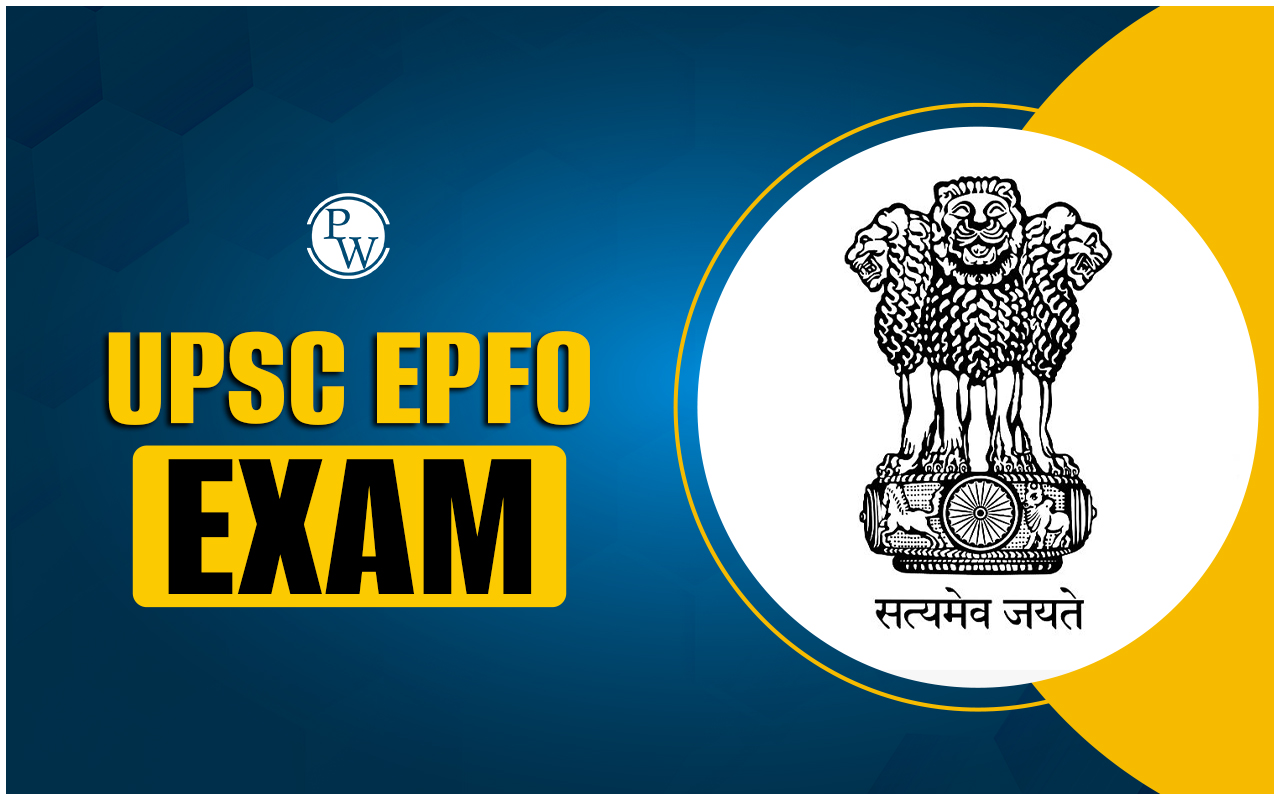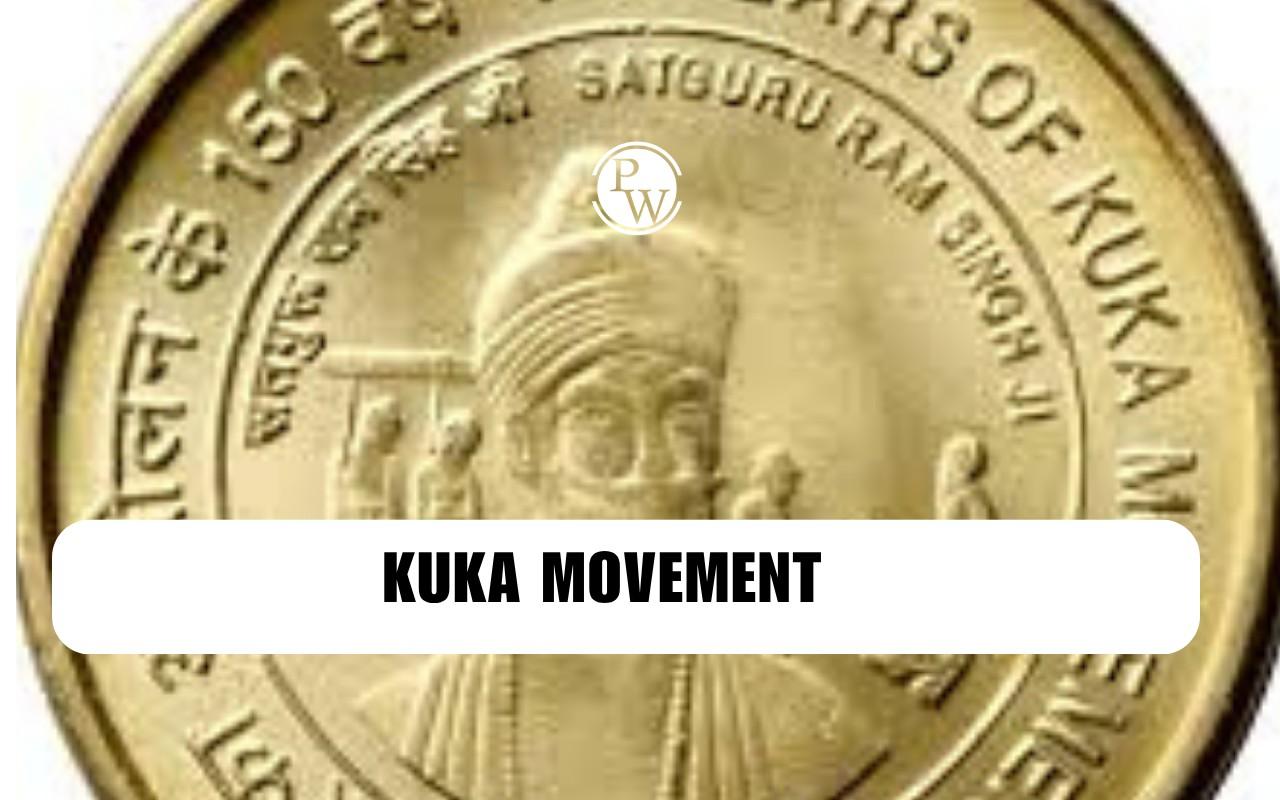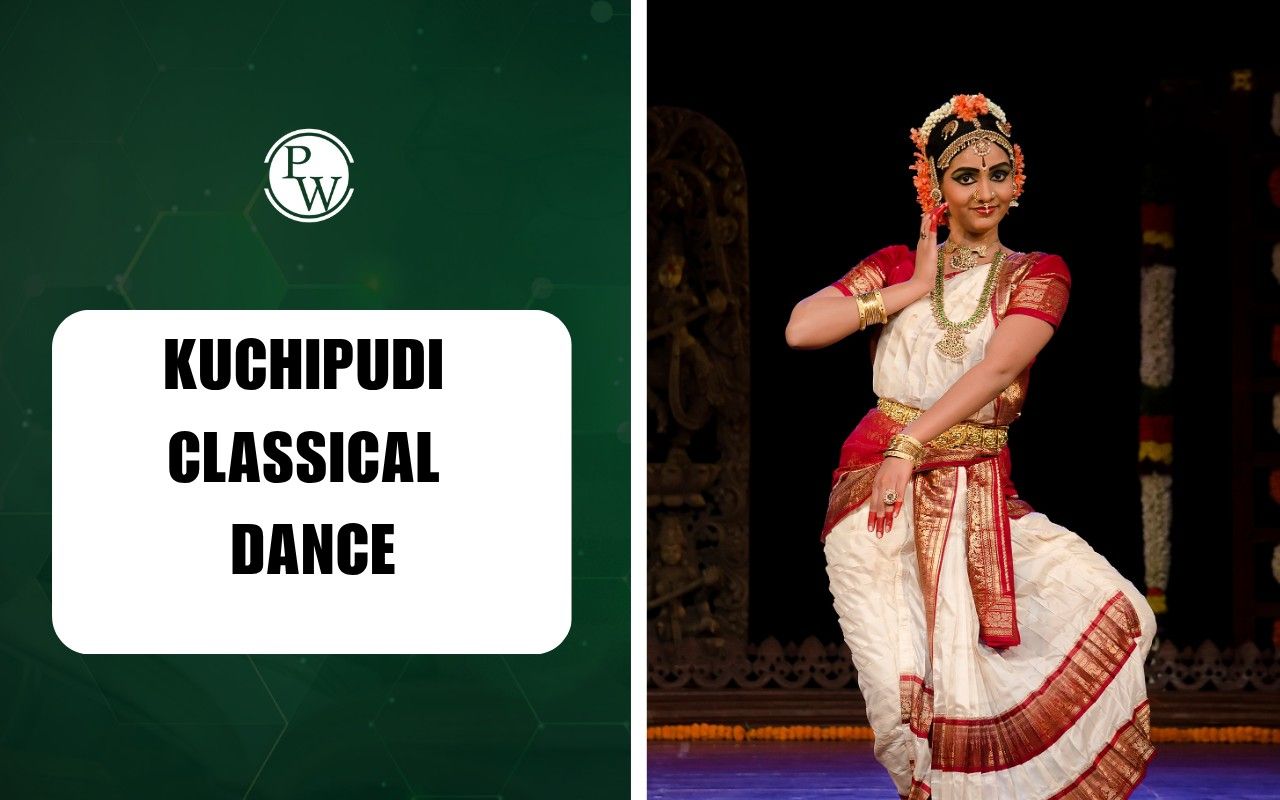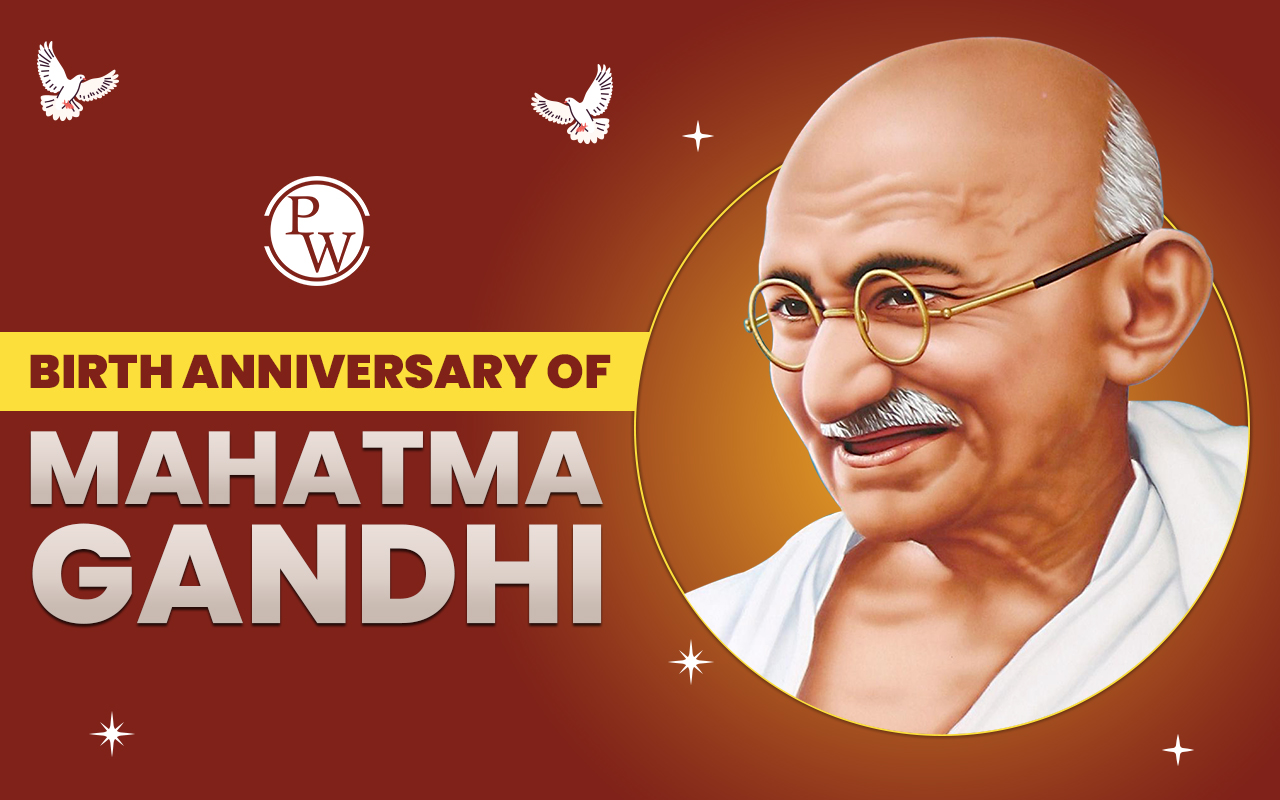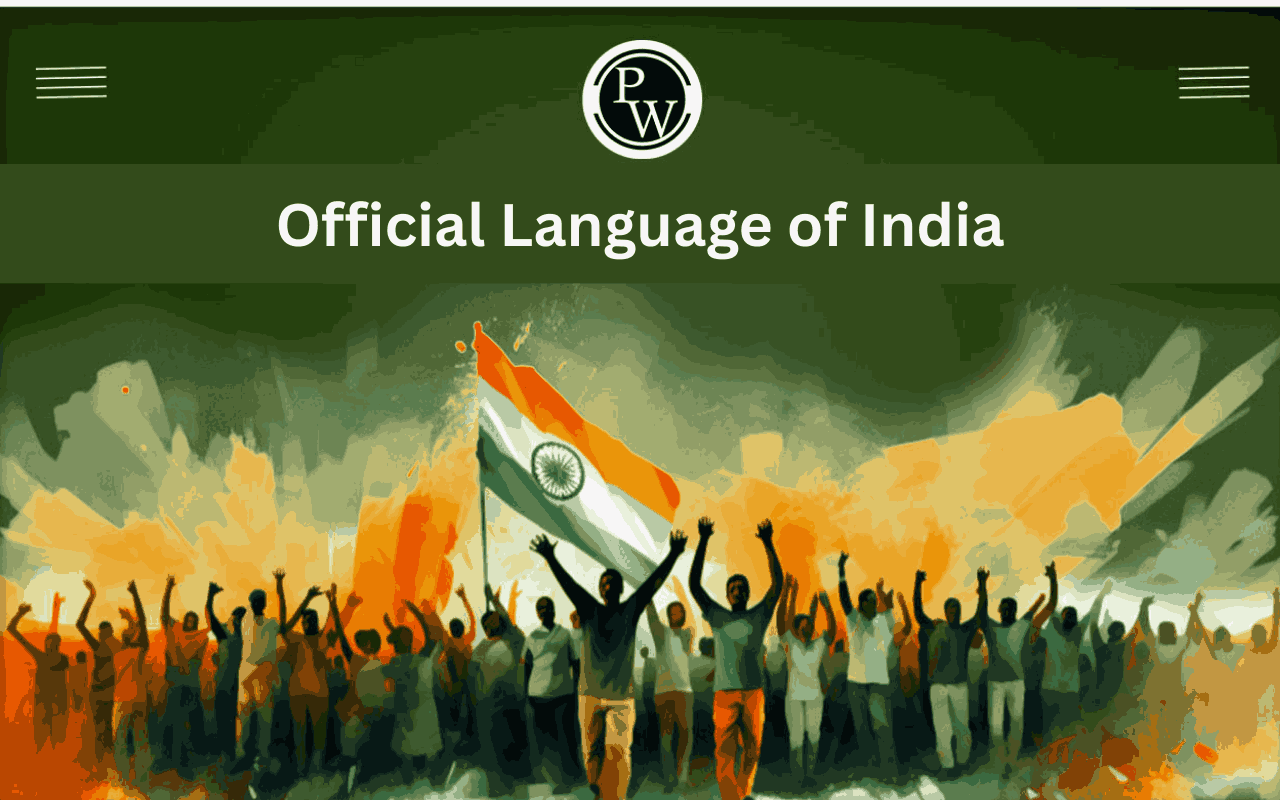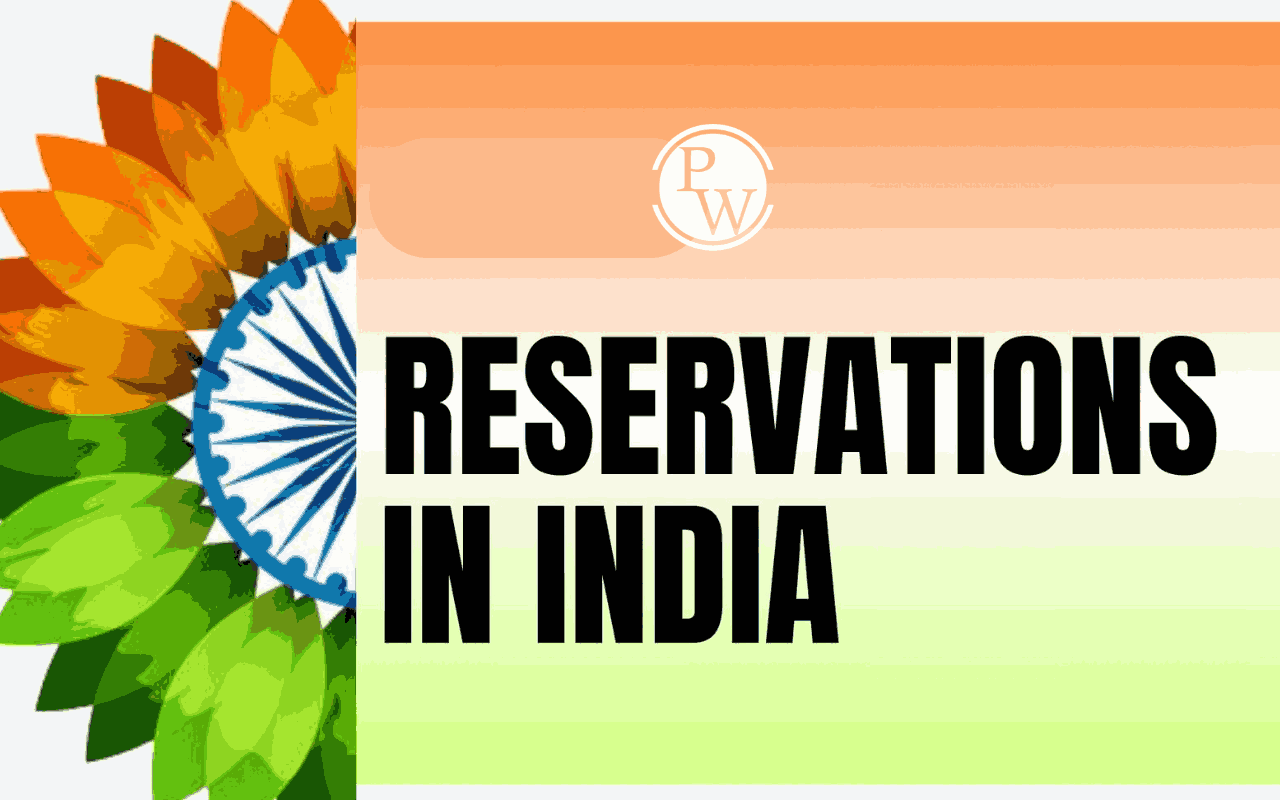
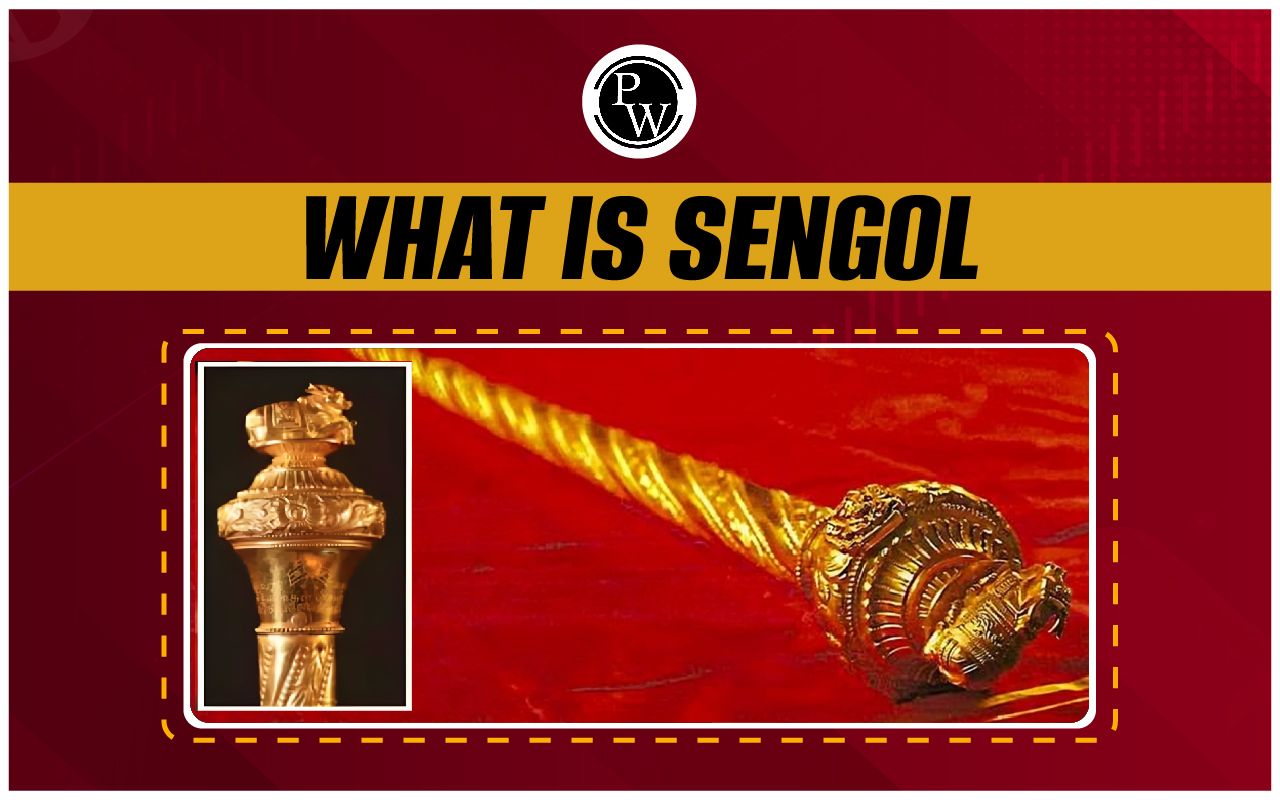
What is Sengol: In simple terms, the Sengol is a 5-foot-long royal sceptre that symbolizes righteousness, justice, and authority. Over the centuries, this kingly emblem has been used to mark the transfer of power in Tamilian kingdoms. Sengol was given to India's first Prime Minister, Pt. Jawaharlal Nehru on eve of independence.
Later, it was installed in the new parliament building by Prime Minister Narendra Modi. Recently, some parties have demanded that ‘ Sengol’ be removed as it is a threat to the Indian Constitution, putting the spotlight on its history and importance. Candidates must know ‘What is Sengol’ from the UPSC exam perspective.What is Sengol?
The term "Sengol," is derived from the Tamil word "Semmai " which means ‘"Righteousness’. It is a remarkable gold-plated silver sceptre approximately 54 cm in length. Sengol is made from precious materials including priceless gemstones. It has a unique design with a knob at the top and a series of rings below it. These rings symbolize different stages of life and the journey of the ruler. Further, the bull or Nandi on Sengol symbolizes justice.| What is Sengol? - Overview | |
| Particular | Details |
| What? | 5-foot long gold-plated silver sceptre |
| Meaning | The term is derived from the Tamil word "Semmai" meaning "Righteousness". |
| Origin | Chola dynasty (9th-13th centuries CE) in South India |
| Early History | Symbol of legitimacy and succession for Kings |
| Significance | Represents the idea of just, righteous, and dutiful governance. |
| First Given To | Prime Minister Jawaharlal Nehru |
| Given By | Thiruvavaduthurai Adheenam |
| Crafting | Vummidi Bangaru Chetty from Chennai, with the help of Vummidi Ethirajulu and Vummidi Sudhakar. |
| Current Status | New Indian Parliament |
History of Sengol
The history of Sengol dates back to the Chola Empire. It was initially believed to be used in the coronation ceremony of the ruler of Ramnad, Thirumayam Setupati (1645). According to historians Sengol sceptre served as a symbol of legitimacy and succession within the Chola lineage. In the latest history, Vummidi Bangaru Chetty, a famous jeweller in the Madras Presidency crafted it with the help of two men, Vummidi Ethirajulu and Vummidi Sudhakar. On the eve of August 14, 1947, Thiruvavaduthurai Adheenam presented Sengol to Jawaharlal Nehru, the first Prime Minister of independent India. The deputy high priest of this 500-year-old Saivaite monastery gave the sceptre to Lord Mountbatten and later brought it to PM Nehru as a symbol of the transfer of power from the British to the Indian people.Also Read: Difference Between Nationality and Citizenship
What is Sengol in Parliament?
It is believed that, after a non-official Sengol ceremony Nehru kept it at his residence in Delhi for some time before deciding to donate it to the Anand Bhavan Museum in Allahabad. It wasn’t made part of the Indian Parliament until the development of the Central Vista redevelopment project when the government decided to revive this historical event. In 2023, the Sengol sceptre was installed in the new parliament building by Prime Minister Narendra Modi. It was placed near the Lok Sabha Speaker 's seat in the new Parliament building and accompanied by a plaque explaining its history and meaning. Sengol in lok sabha symbolises sacrifices made by the people of India during the freedom struggle, justice, and democratic values.Significance of Sengol
Along with understanding what is Sengol it is equally important to understand the significance of this sceptre in the Indian Parliament. The Sengol signifies that the democracy of India is truly rooted in its ancient traditions and values.- The Sengol symbolizes the idea that governance should be just, aligned with policies, and dutiful.
- It sends a powerful message to the nation and the world about India's commitment to upholding the principles of righteousness, justice, and inclusive development.
- The Sengol holds great significance for the people of India, as it represents the transfer of power from one ruler to another and the continuity of governance.
- Sengol is a traditional symbol of the authority and responsibility of the ruler to serve the people and uphold the principles of justice, equality, and fairness.
- The Sengol also represents the unity and diversity of India, as it brings together the traditions of different regions and communities.
| UPSC Related Articles | ||
| UPSC Mains Subjects | Lok Sabha Vs Rajya Sabha | UPSC Mains Admit Card |
| UPSC Mains Exam Pattern 2024 | UPSC Scholarship Test 2024 | UPSC Result 2024 |
What is Sengol FAQs
What is Sengol UPSC?
Sengol is a 5-foot-long gold-plated silver sceptre symbolizing righteousness, justice, and authority, historically used to mark the transfer of power in Tamilian kingdoms.
Sengol was first given to which of the following personalities from India?
Sengol was first given to India's first Prime Minister, Pt. Jawaharlal Nehru, on the eve of independence.
Where did Sengol come from?
Sengol originated from the Chola dynasty in South India and was later crafted by Vummidi Bangaru Chetty in the Madras Presidency.
What is the meaning of Sengol in Hinduism?
In Hinduism, Sengol signifies righteousness and justice, derived from the Tamil word "Semmai," meaning "Righteousness."
Who gave Sengol to PM Nehru?
The Thiruvavaduthurai Adheenam, a Saivaite monastery, presented Sengol to PM Jawaharlal Nehru.
Talk to a counsellorHave doubts? Our support team will be happy to assist you!

Check out these Related Articles
Free Learning Resources
PW Books
Notes (Class 10-12)
PW Study Materials
Notes (Class 6-9)
Ncert Solutions
Govt Exams
Class 6th to 12th Online Courses
Govt Job Exams Courses
UPSC Coaching
Defence Exam Coaching
Gate Exam Coaching
Other Exams
Know about Physics Wallah
Physics Wallah is an Indian edtech platform that provides accessible & comprehensive learning experiences to students from Class 6th to postgraduate level. We also provide extensive NCERT solutions, sample paper, NEET, JEE Mains, BITSAT previous year papers & more such resources to students. Physics Wallah also caters to over 3.5 million registered students and over 78 lakh+ Youtube subscribers with 4.8 rating on its app.
We Stand Out because
We provide students with intensive courses with India’s qualified & experienced faculties & mentors. PW strives to make the learning experience comprehensive and accessible for students of all sections of society. We believe in empowering every single student who couldn't dream of a good career in engineering and medical field earlier.
Our Key Focus Areas
Physics Wallah's main focus is to make the learning experience as economical as possible for all students. With our affordable courses like Lakshya, Udaan and Arjuna and many others, we have been able to provide a platform for lakhs of aspirants. From providing Chemistry, Maths, Physics formula to giving e-books of eminent authors like RD Sharma, RS Aggarwal and Lakhmir Singh, PW focuses on every single student's need for preparation.
What Makes Us Different
Physics Wallah strives to develop a comprehensive pedagogical structure for students, where they get a state-of-the-art learning experience with study material and resources. Apart from catering students preparing for JEE Mains and NEET, PW also provides study material for each state board like Uttar Pradesh, Bihar, and others
Copyright © 2025 Physicswallah Limited All rights reserved.
